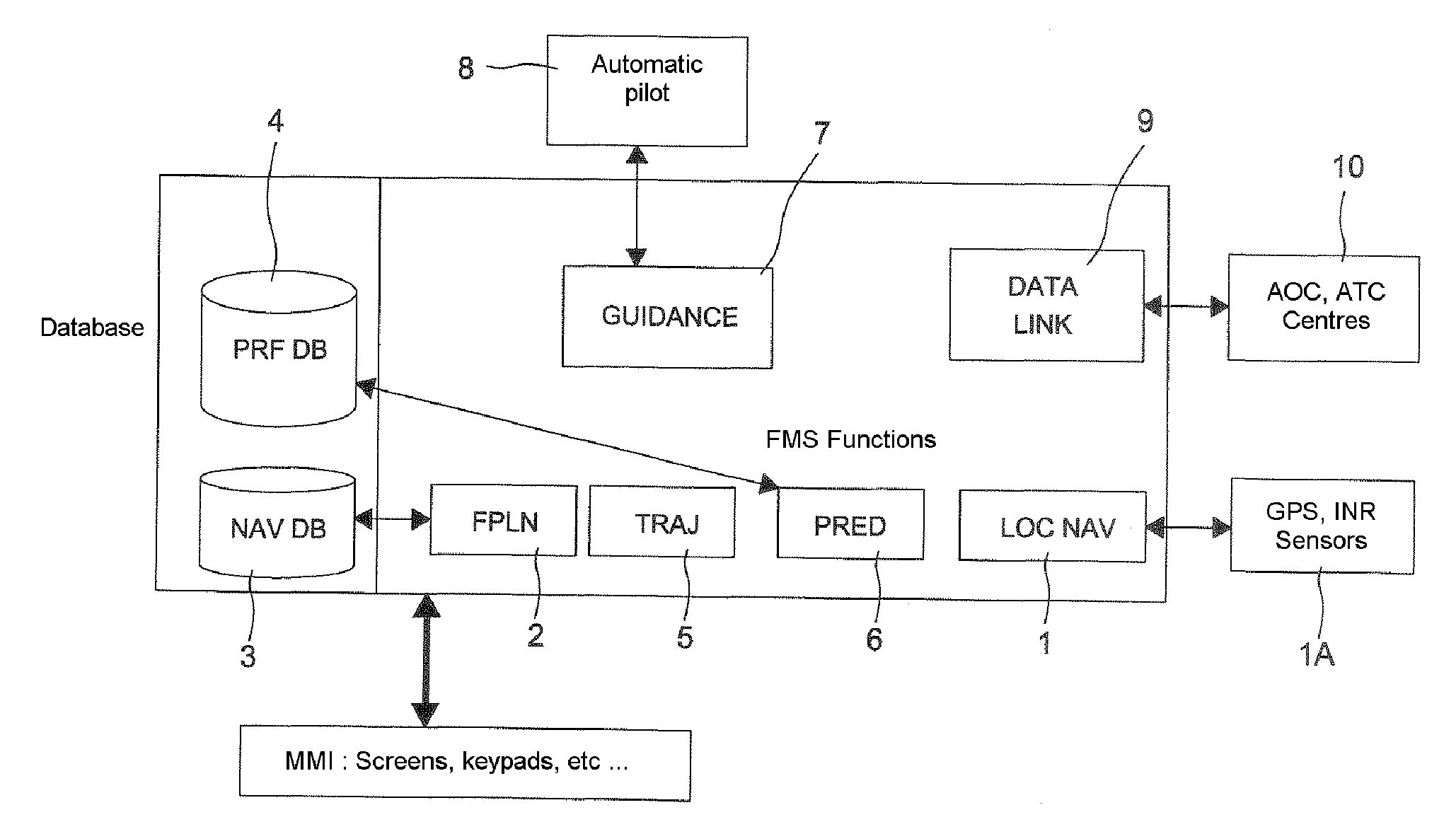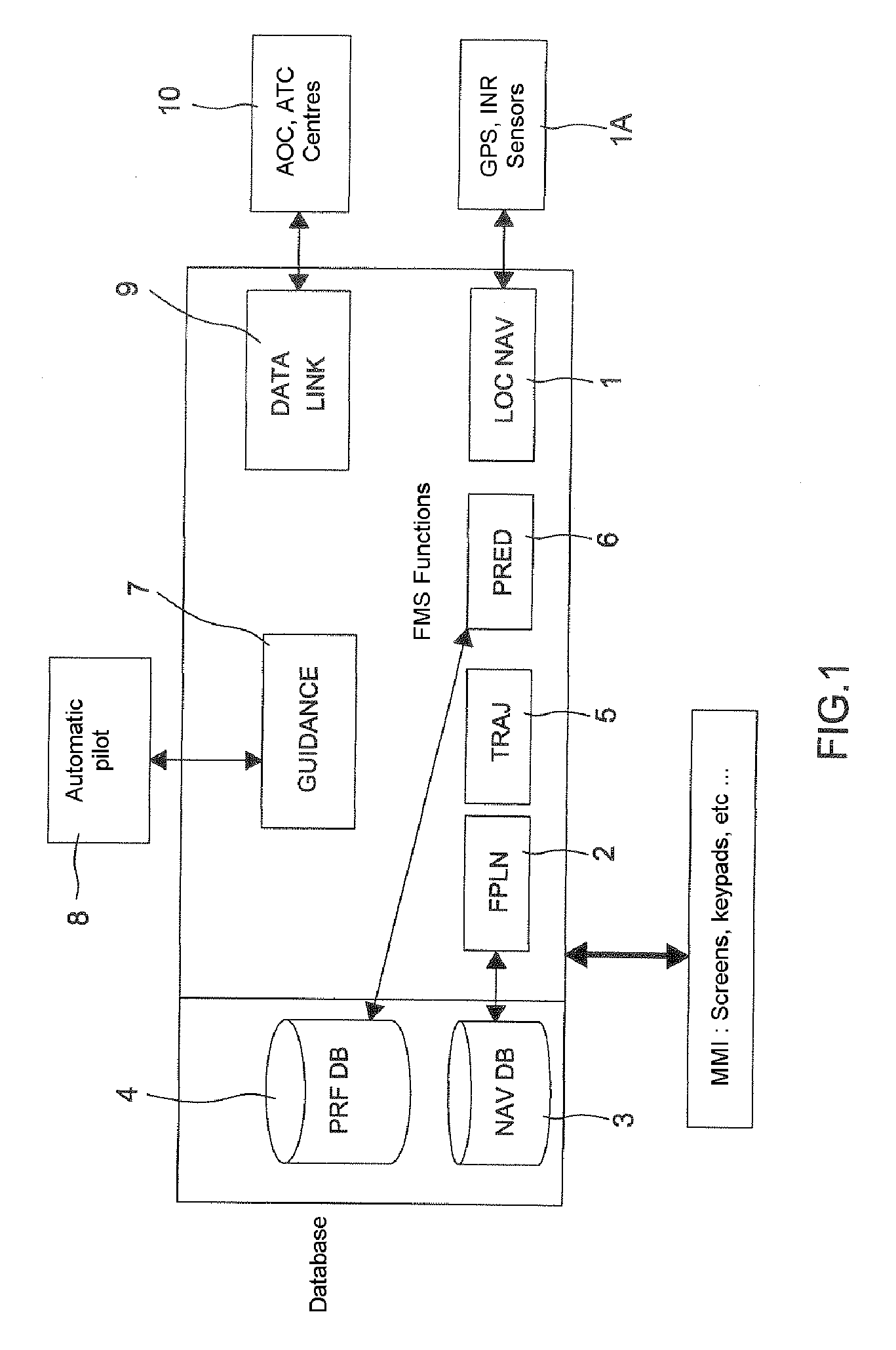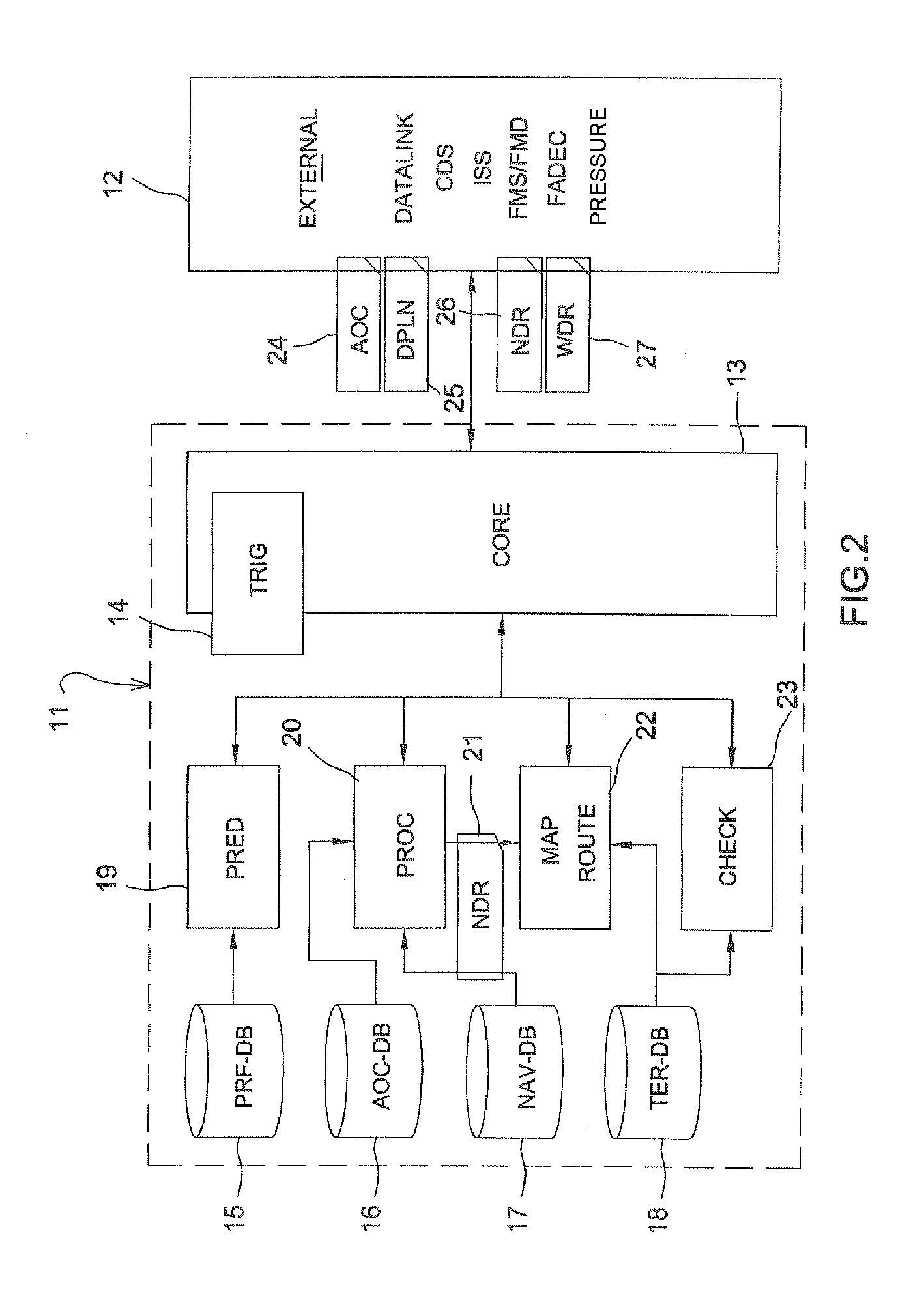Method of forming a 3D safe emergency descent trajectory for aircraft and implementation device
a safe emergency and aircraft technology, applied in the direction of navigation instruments, instruments, using reradiation, etc., can solve the problems of intentional degradation of resolution, unsuitable for representing the zone of the aircraft, and bad decision can have serious consequences on the continuation of the fligh
- Summary
- Abstract
- Description
- Claims
- Application Information
AI Technical Summary
Benefits of technology
Problems solved by technology
Method used
Image
Examples
Embodiment Construction
[0056]The invention is described below with reference to various emergency situations that may arise for an aircraft, but it is of course understood that it can also be implemented for various other types of flying craft, such as drones, whatever the emergency situations that may arise.
[0057]In the simplified block diagram of a conventional aircraft flight management device (termed FMS) of FIG. 1, which is furnished with a man-machine interface MMI, the following FMS functions, described in the ARINC 702 standard (Advanced Flight Management Computer System, Dec 1996), have been represented. They normally ensure all or some of the functions of:[0058]Navigation LOCNAV, referenced 1, to perform optimal location of the aircraft as a function of the geo-locating means (GPS, GALILEO, VHF radio beacons, inertial platforms, referenced 1A as a whole),[0059]Flight plan FPLN, referenced 2, to input the geographical elements constituting the skeleton of the route to be followed, namely: departu...
PUM
 Login to View More
Login to View More Abstract
Description
Claims
Application Information
 Login to View More
Login to View More - R&D
- Intellectual Property
- Life Sciences
- Materials
- Tech Scout
- Unparalleled Data Quality
- Higher Quality Content
- 60% Fewer Hallucinations
Browse by: Latest US Patents, China's latest patents, Technical Efficacy Thesaurus, Application Domain, Technology Topic, Popular Technical Reports.
© 2025 PatSnap. All rights reserved.Legal|Privacy policy|Modern Slavery Act Transparency Statement|Sitemap|About US| Contact US: help@patsnap.com



